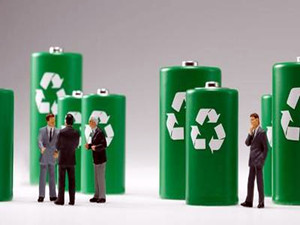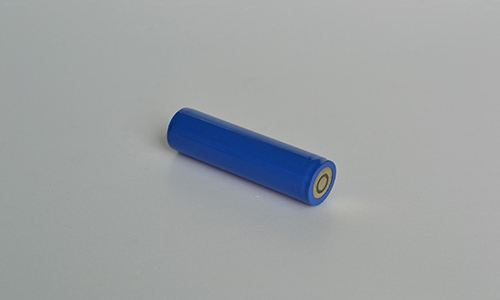Types of Rechargeable Batteries
Oct 18, 2019 Pageview:1593
There are quite some rechargeable batteries with different uses and different applications too. These batteries are different from non-rechargeable or disposable batteries, which are always removed and disposed of after use.
Rechargeable batteries are initially more expensive (so they seem) than the disposable non-rechargeable batteries. But these batteries can be reused after recharging, and this can be done time and time again. This, in the long run, consequently makes them more cost-effective as well as being environmentally friendly, unlike the others. And this makes them more affordable in the long run as well.
What is the best type of rechargeable battery?
We all know batteries are portable energy storage devices. They provide us with the required energy to power our various devices like Flashlights, GPS devices, headlamps, cameras, mobile phones, music players and a lot more. An ideal battery offers a balance of high performance, long life, and must also come at a reasonable cost as well as having a low environmental impact. For you to achieve this, you must know what you are looking for in a battery. This can be quite a difficult thing to do when it comes to several details like studying the battery electrodes, cathodes, and different metals.
To answer the question of what the best rechargeable battery is quite tricky. This is because your device was made with a certain type of battery in mind. If you go on to use another type of battery, you may not get the best result from the association. However, most modern devices are made today with Lithium-ion batteries in mind. This means that there is something nice about Lithium-ion batteries, consequently, its adoption by many manufacturers. Li-ion batteries are even used in electric cars and aircraft.
Li-ion batteries are used where lightness and a high energy density are important. In the system, lithium ions migrate from the negative electrode to the positive electrode as the battery is being discharged, and then a reverse action occurs during charging.
Li-Ion batteries are the fastest growing battery options in the market today with applications in a wide range of devices, such as cell phones to laptops, electric cars, and aircraft. After emerging in the early 1990s’ along with the Nickel-metal hydride batteries, Li-ion battery is now the most promising battery on the market.
Lithium-ion batteries are safe, provided the user adheres to the basic precautionary steps while the battery is either being used, charged or stored. Li-ion batteries are slightly lower than lithium metal batteries in energy density, and they are about double the capacity of Nickel-cadmium.
Lithium-ion batteries also require very little maintenance, and that is another benefit. They do not need or have a memory so do not need scheduling to extend the battery life. And also, the self-discharge of these lithium-ion batteries are not up to half of that of nickel-cadmium.
Lithium polymer batteries, however, have a cost, flexibility and durability advantage over Li-ion batteries. The batteries can take any shape the manufacture wants and can be made to size in any device irrespective of shape and size. They have a little more specific energy than the Li-ion batteries and can also be made thinner. They, however, have a higher manufacturing cost, of about 10% to 30% more than Li-ion batteries.
How to choose the battery for your device?
· Find out the size of the battery your device uses
This is a very simple one. You have to know if your device runs on the AAA or the AA batteries, so you know what it runs on. There should be an indication on the gadget which type of battery it runs on, you may also consult the device instructional manual for more information.
· Decide if to use single-use or a rechargeable battery
You should choose between single-use or rechargeable batteries. You should also know that a single-use battery may seem cheap at first, but once they exhaust the charge in them, they have to be replaced. But a rechargeable battery can be charged to be reused time and time again, which makes them the most cost-effective option in the long run.
· Go for the right type of battery
You can make the right choice if you know how batteries work. This includes knowing how lithium-ion batteries differ from alkaline and also differ from NiMH batteries.
What type of rechargeable battery lasts the longest?
Everyone wants to purchase only good products, and only good batteries last long. They also charge faster and stay charged for long even when they are out of the market. They also offer more to users. While the question of which type of rechargeable battery lasts longer may seem simple, it is not easy to answer. This is because there are various manufacturers of batteries who embed their batteries with different functions, and these batteries are also made for different applications. So it may be tricky answering which lasts longer since different device consumes energy differently.
The Sanyo Eneloop battery has a competitive advantage over other AA rechargeable batteries since it was introduced in 2005. Eneloops was, in principle, able to keep its charge longer than the other rechargeable batteries in its class, including other self-discharging AA batteries. Eneloops can hold up to 85% of its charge for one year and then up to 75% of its charge after three years.
Sanyo has however gone on to improve on that battery by releasing a new version of Eneloop called the Eneloop Pro (for Japan users) or the Sanyo XX battery, powered by Eneloop (for users in Europe and the US). The Eneloop Pro has a capacity of up to 2500 mAh, (that is 500 mAh more than the original Eneloop). In some informal tests, the Eneloop Pro maintained its superior capacity of retaining charges and retained up to 2035 mAh even after 7 weeks of storage, which is more than the other NiMH batteries (normal and low discharge). This makes it the most durable AA rechargeable battery. The Energizer recharge, which was found to retain up to 1859 mAh after seven weeks of storage, is the only other battery that comes close.
The Eneloop Pro is available on Amazon. It is also available with its charger included. Sanyo has, however, not released a AAA version of its Eneloop Pro.
Different types of rechargeable batteries and their applications
Lead-acid batteries
The Applications of the lead-acid batteries are in cars, UPS or Uninterrupted Power Supply, robotics, as well as heavy machinery, among a variety of applications.
Ni-Cad batteries
The application of NiCad batteries is in RC toys, solar lights, cordless phones, and they are used mostly in the devices where the price is crucial.
Ni-MH batteries
The application of NiMH batteries includes all areas similar to the alkaline and the Ni-Cad batteries.
Li-ion batteries
The application of Li-ion batteries includes Power backups/UPS, Mobile devices and Laptops, energy storage Systems, and other major consumer electronic devices.
Li-Po batteries
The application of Li-Po batteries includes all portable devices in need of rechargeable power sources drones, RC toys, robotics, etc.
- Prev Article: Lithium Ion Battery Maintenance
- Next Article: 18650 Battery Wrap Peeling
Leave Message
Hottest Categories
-
Hottest Industry News
-
Latest Industry News











